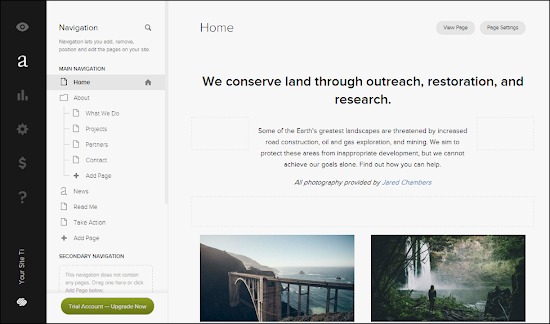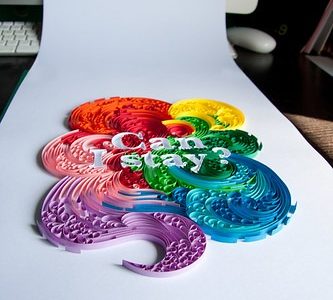Fundamentals of Website Design
Understanding the fundamentals of website design is essential for creating engaging and effective online experiences. It involves a combination of visual creativity and technical skills to build websites that are both attractive and functional. By mastering core concepts such as layout, color schemes, typography, and usability, designers can craft websites that efficiently communicate messages and meet user needs.
Understanding User Experience (UX)
Understanding User Experience (UX) is essential in designing a successful website. UX focuses on creating a seamless and enjoyable interaction for users, ensuring their needs and expectations are met effectively. Good UX design involves intuitive navigation, clear content structure, and fast loading times, all of which contribute to user satisfaction.
Fundamentals of website design also include visual aesthetics, responsiveness, and accessibility. A visually appealing layout captures users’ attention, while a responsive design ensures the site functions well across different devices and screen sizes. Accessibility features help make websites usable by everyone, including people with disabilities.
Effective website design combines these principles to provide a positive overall experience, encouraging visitors to stay longer and engage more deeply with the content or services offered. Prioritizing UX in the design process ultimately leads to increased user retention, better brand perception, and improved success of the website.
Core Principles of Visual Design
Fundamentals of website design revolve around creating an engaging and user-friendly experience that effectively communicates the intended message. A well-designed website should not only be visually appealing but also easy to navigate, ensuring users can find information effortlessly. Core principles of visual design, including balance, contrast, hierarchy, alignment, repetition, proximity, and color, play a crucial role in achieving this goal. Balance ensures a harmonious distribution of elements, while contrast helps important features stand out. Hierarchy guides users through content in a logical order, and alignment creates a cohesive look. Repetition reinforces branding and visual consistency, and proximity groups related items together for clarity. Thoughtful use of color enhances readability and emotional impact, contributing to the overall effectiveness of the website’s design. By applying these core principles, web designers can craft sites that are both aesthetically pleasing and highly functional, improving user satisfaction and engagement.
Importance of Accessibility
Fundamentals of website design involve creating a layout that is visually appealing, easy to navigate, and functional for users. A well-designed website should focus on clear structure, consistent color schemes, and intuitive interfaces to enhance the user experience.
Accessibility is a crucial aspect of website design because it ensures that all users, including those with disabilities, can access and use the website effectively. Incorporating accessibility features like screen reader compatibility, keyboard navigation, and appropriate contrast helps make websites inclusive and beneficial for everyone.
Designing for Different Devices
Designing for different devices is essential in creating a seamless and accessible website experience. As users access websites through a variety of screens such as desktops, tablets, and smartphones, ensuring that a site functions well across all devices is crucial. Responsive design techniques help tailor the layout and content to fit various screen sizes, providing an optimal user experience regardless of the device used. This approach not only improves usability but also enhances the aesthetic appeal of the website.
Responsive Design Strategies
Designing for different devices requires implementing responsive design strategies that ensure a seamless user experience across desktops, tablets, and smartphones. This involves utilizing flexible layouts, images, and grids that adapt to various screen sizes and orientations. Media queries are essential tools in responsive design, allowing developers to apply specific CSS styles based on device characteristics like width, height, resolution, and aspect ratio. Fluid grids enable content to resize proportionally, maintaining usability without overflowing or gaps. Additionally, scalable images and flexible typography contribute to a consistent visual presentation. Prioritizing mobile-first design approaches ensures that websites are optimized for smaller screens before scaling up to larger ones. Overall, employing these strategies helps create adaptable and user-friendly websites that cater to the diverse range of devices used today.
Mobile-First Approach
Designing for different devices requires a flexible approach that ensures websites function seamlessly across various screen sizes and device types. The mobile-first approach is a strategy where designers prioritize the mobile experience first, then adapt the layout for larger screens. This method encourages simplicity and efficient use of space, resulting in faster-loading pages and better usability on mobile devices. By focusing on essential content and streamlined navigation from the outset, designers can create websites that are not only visually appealing but also highly functional on smartphones and tablets. As devices continue to diversify, adopting a mobile-first mindset ensures a consistent user experience and helps in achieving broader accessibility and engagement.
Cross-Browser Compatibility
Designing for different devices and ensuring cross-browser compatibility are essential aspects of creating a successful website. To accommodate various screen sizes, responsive design techniques such as flexible grid layouts, scalable images, and media queries are employed. These methods help ensure that content looks and functions well on desktops, tablets, and smartphones. Additionally, testing websites across multiple browsers like Chrome, Firefox, Safari, and Edge is crucial to identify and resolve inconsistencies in layout, features, or performance. Using standardized coding practices, adhering to web standards, and leveraging tools like browser developer consoles can facilitate cross-browser compatibility. Ultimately, a well-designed website provides a seamless experience for all users, regardless of their device or browser choice.
Essential Website Elements
Effective website design incorporates essential elements that enhance user experience and ensure the site achieves its purpose. These elements include clear navigation, engaging visuals, and responsive layout, all working together to create an intuitive and appealing interface. A well-designed website communicates professionalism and builds trust, making it crucial to understand and implement these core components.
Navigation Menus
Navigation menus are a crucial element of website design, guiding visitors through the site’s content and helping them find what they need efficiently. An effective navigation menu should be simple, intuitive, and easy to locate on the page. Typically, it includes links to the main sections or pages of the website, such as Home, About, Services, and Contact, allowing users to move seamlessly between different areas.
Good website design emphasizes clarity and accessibility in navigation menus. Clear labels and organized structures enhance user experience and decrease bounce rates. Dropdown menus or sidebar menus can be used to accommodate subcategories without cluttering the main navigation area.
Overall, well-structured navigation menus contribute to a positive user journey, making the website more user-friendly and professional. This is essential for engaging visitors, encouraging exploration, and achieving the website’s objectives.
Call-to-Action Buttons
Effective website design relies on incorporating essential elements that engage visitors and guide them toward desired actions. One crucial component is the placement of clear and compelling call-to-action buttons, which direct users to take specific steps such as making a purchase, signing up for a newsletter, or contacting support.
Key aspects of call-to-action buttons include visibility, clarity, and persuasive language. They should stand out visually through appropriate colors, size, and placement, making them easy to locate on the page. The wording should be concise and action-oriented to motivate users effectively.
- Use contrasting colors to make the button stand out from the surrounding content.
- Position buttons prominently where users naturally focus, such as near the top or after engaging content.
- Ensure the text clearly states the benefit or action, like “Get Started” or “Download Now.”
- Maintain a consistent style throughout the site for brand cohesion.
- Design with mobile users in mind, making buttons large enough for touch navigation.
By thoughtfully integrating call-to-action buttons into your website’s layout and ensuring they are visually appealing and easy to interact with, you enhance user experience and increase conversion rates.
Content Layout and Hierarchy
Effective website design relies heavily on well-organized essential elements, content layout, and hierarchy to ensure a seamless user experience. The essential elements include a clear navigation menu, engaging visuals, contact information, and calls to action that guide visitors through the site. Content layout involves arranging text, images, and multimedia in a way that is visually appealing and easy to read, often utilizing grids or sections to create a balanced appearance. Hierarchy is crucial for guiding users’ attention to the most important information first by using size, color, and placement to differentiate headings, subheadings, and body content. A thoughtful combination of these elements helps create an intuitive website that communicates effectively and encourages user interaction.
Color Theory and Typography
Color theory and typography are fundamental elements in website design that significantly influence user experience and visual appeal. Understanding how colors interact and evoke emotions, along with choosing appropriate fonts, helps create engaging and accessible websites. When used effectively, these components work together to communicate brand identity, guide visitors through content, and enhance overall functionality.
Choosing Effective Color Schemes
Effective website design hinges on the thoughtful combination of color theory and typography to create visually appealing and user-friendly interfaces. Color theory involves understanding how different colors interact and evoke emotions, helping designers choose schemes that enhance readability and convey the intended mood. Complementary, analogous, and triadic color schemes are commonly used to establish harmony and contrast, guiding users intuitively through the website’s content. Typography, on the other hand, involves selecting fonts and arranging text in ways that improve legibility and reinforce the site’s aesthetic. Pairing appropriate font styles with suitable colors ensures that messages are clear and engaging. When choosing color schemes, it is essential to consider accessibility, ensuring sufficient contrast for users with visual impairments. Overall, successful website design integrates these principles to create a cohesive visual experience that captivates visitors and supports the site’s purpose.
Typography Best Practices
Effective website design relies heavily on the principles of color theory and typography to create visually appealing and user-friendly interfaces. Color theory involves understanding how colors interact, evoke emotions, and influence user behavior, allowing designers to select palettes that enhance readability and brand identity. Combining complementary or analogous colors can improve visual harmony and guide users’ attention to important elements.
Typography plays a crucial role in website design by ensuring content is accessible and engaging. Choosing appropriate font styles, sizes, and line spacing improves readability across different devices and screen resolutions. Consistency in typography contributes to a cohesive look, while careful use of hierarchy, such as headings and body text, guides users smoothly through the content. Utilizing ample contrast between text and background enhances visibility and reduces eye strain.
Best practices in typography include limiting the number of fonts to maintain visual coherence, selecting typography that aligns with the website’s purpose and brand personality, and paying attention to a comfortable line length. Developers should also prioritize accessibility by selecting fonts that are legible and incorporating sufficient color contrast. Combining strong color choices with thoughtful typography creates a balanced and attractive website that improves user engagement and experience.
Balancing Text and Visuals
Effective website design hinges on the harmonious integration of color theory and typography to create a visually appealing and functional user experience. Color theory helps designers select complementary or contrasting colors that evoke desired emotions and direct user attention, enhancing readability and engagement. Typography, on the other hand, involves choosing fonts, sizes, and spacing that improve legibility and establish a clear hierarchy of information. Balancing text and visuals is crucial; visuals should support the message without overwhelming the content, while textual elements should be clear and inviting. When color schemes and typography work together thoughtfully, they guide users seamlessly through the site, making the content both attractive and easy to navigate.
Optimizing Website Performance
Optimizing website performance is essential for creating a seamless user experience and ensuring that visitors stay engaged. Effective website design focuses not only on visual appeal but also on functionality, speed, and responsiveness. By implementing strategic techniques to enhance load times and reduce unnecessary elements, designers can significantly improve the overall efficiency and effectiveness of a website.
Image Optimization Techniques
Effective image optimization techniques play a crucial role in enhancing overall website performance and user experience. By properly optimizing images, websites can achieve faster load times, reduce bandwidth usage, and improve SEO rankings. Techniques such as choosing the right image format, compressing images without significant quality loss, and leveraging responsive images help ensure that visual content loads efficiently across different devices and screen sizes. Additionally, using tools to automatically optimize images during upload or deployment can streamline the process and maintain consistent performance. Implementing these practices in website design not only benefits website speed but also creates a more engaging and accessible user experience.
Code Minification and Compression
Optimizing website design involves enhancing the overall user experience and ensuring fast loading times. Code minification and compression are essential techniques in achieving this goal. Minification reduces the size of HTML, CSS, and JavaScript files by removing unnecessary characters, spaces, and comments, which decreases server load and decreases page load times. Compression tools like gzip or Brotli further reduce the size of transmitted files during data transfer between the server and the user’s browser. Implementing these strategies helps create a responsive and seamless browsing experience, ultimately improving website performance and user satisfaction. Regularly reviewing and updating code with optimization techniques ensures the website remains fast, efficient, and competitive in a busy digital environment.

Page Load Speed Improvement
Optimizing website performance and improving page load speed are essential components of effective website design. Fast-loading pages enhance user experience, reduce bounce rates, and improve search engine rankings. To achieve optimal speed, designers should focus on minimizing file sizes by compressing images and using efficient coding practices. Implementing browser caching allows returning visitors to load pages more quickly by storing static resources locally. Utilizing Content Delivery Networks distributes content across multiple servers worldwide, ensuring faster access regardless of user location. Additionally, streamlining website layout and reducing unnecessary scripts help decrease load times. Regularly testing website performance with tools like Google PageSpeed Insights or GTmetrix offers valuable insights and helps identify areas for further enhancement, ensuring the website remains fast, responsive, and engaging for users.
Incorporating Branding Elements
Incorporating branding elements into website design is essential for creating a cohesive and memorable online presence. By thoughtfully integrating logos, color schemes, typography, and imagery, businesses can convey their unique identity and build trust with their audience. Effective use of branding elements in website design helps differentiate a brand from competitors and reinforces brand recognition across all digital platforms.
Logo Placement and Design
Incorporating branding elements effectively into website design is essential for creating a cohesive and recognizable online presence. Consistent use of logo placement and design helps reinforce brand identity and ensures visitors immediately associate the website with the brand. Thoughtful integration of colors, typography, and imagery also plays a crucial role in strengthening brand recognition across all pages.
When designing the layout, consider the following key aspects for logo placement and design:
- Place the logo in a prominent location, such as the top left corner, where users naturally look first.
- Ensure the logo size is appropriate—large enough to be noticeable without overpowering other content.
- Maintain consistency in logo variations across different pages to reinforce brand identity.
- Use clear and high-quality logo images that align with the overall website aesthetic.
- Incorporate branding elements such as specific color schemes and fonts throughout the site to create a unified look.
By paying attention to these details, website design can effectively communicate brand values and foster trust with visitors, ultimately enhancing user experience and brand loyalty.
Consistent Style Guides
Incorporating branding elements through consistent style guides is essential for creating a cohesive and recognizable website design. A well-defined style guide ensures that all visual and textual components reflect the brand’s identity, fostering trust and familiarity with visitors.
- Define core brand elements such as logo, color palette, typography, and imagery guidelines to maintain visual consistency.
- Create a comprehensive style guide that details the usage of fonts, colors, spacing, and button styles across all pages.
- Implement branding elements uniformly in headers, footers, navigation menus, and content sections to reinforce brand identity.
- Regularly update the style guide to adapt to new branding strategies or design trends, ensuring the website remains current.
- Ensure that all team members and developers have access to and understand the style guide to maintain consistency during updates or expansion.
Building Brand Recognition
Incorporating branding elements into website design is essential for creating a cohesive and memorable online presence. Consistent use of logos, color schemes, typography, and imagery helps reinforce brand identity and makes it easier for visitors to recognize and remember the brand. Building brand recognition through website design involves strategic placement of these elements so they become an integral part of the user experience, fostering trust and loyalty.
Latest Trends in Website Design
In the ever-evolving world of digital presence, staying current with the latest trends in website design is essential for creating engaging and effective online experiences. Modern approaches focus on clean aesthetics, intuitive navigation, and innovative features that capture users’ attention. As technology advances, designers are embracing new styles and functionalities to enhance usability and visual appeal, ensuring websites stand out in a competitive digital landscape.
Minimalism and Flat Design
Latest trends in website design are heavily influenced by minimalism and flat design, focusing on simplicity and user experience. Minimalism emphasizes clean layouts, ample white space, and straightforward navigation to create an elegant and distraction-free environment. Flat design, on the other hand, removes any three-dimensional effects like shadows or gradients, opting instead for bold colors, simple icons, and flat elements that improve load times and responsiveness. Combining these trends results in websites that are modern, visually appealing, and easy to use, aligning with the increasing demand for mobile-friendly and accessible online interfaces. Developers and designers are also incorporating subtle animations and interactive features to enhance engagement without cluttering the overall aesthetic.
Microinteractions and Animations
Latest trends in website design emphasize the integration of microinteractions and animations to create engaging and dynamic user experiences. Microinteractions, such as button hover effects, loading indicators, and notification animations, foster user engagement by providing instant feedback and enhancing usability. Subtle animations, like smooth scrolling, animated icons, and animated typography, add visual interest without overwhelming the content. Modern website designs are increasingly utilizing microinteractions and animations to guide users intuitively through the site, improve accessibility, and create memorable brand impressions. These trends not only elevate aesthetic appeal but also contribute to a seamless and interactive browsing experience, making websites more compelling and user-friendly in today’s digital landscape.
Dark Mode and Theme Customizations
Latest trends in website design emphasize user experience, aesthetics, and functionality, with dark mode and theme customizations playing a significant role. Dark mode has gained popularity for its reduced eye strain and energy efficiency, especially on OLED screens, making it a preferred choice for many users. It also provides a sleek and modern look, enhancing visual contrast and readability when paired with vibrant colors. Theme customizations allow users to personalize their browsing experience, offering options for light, dark, or even high-contrast themes. This flexibility not only improves accessibility but also helps brands stand out by offering unique, adaptable interfaces. Incorporating these trends involves designing responsive layouts that seamlessly switch between themes, ensuring consistency across devices and enhancing overall user engagement. As website design continues to evolve, integrating dark mode and customizable themes remains essential for creating user-centric, visually appealing sites.





